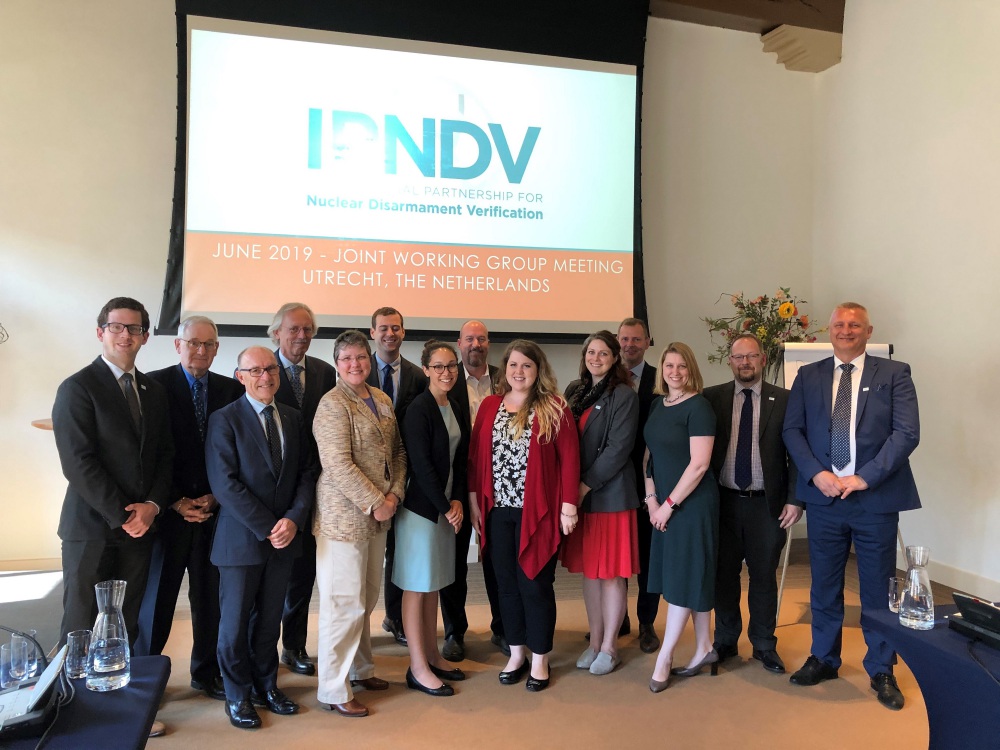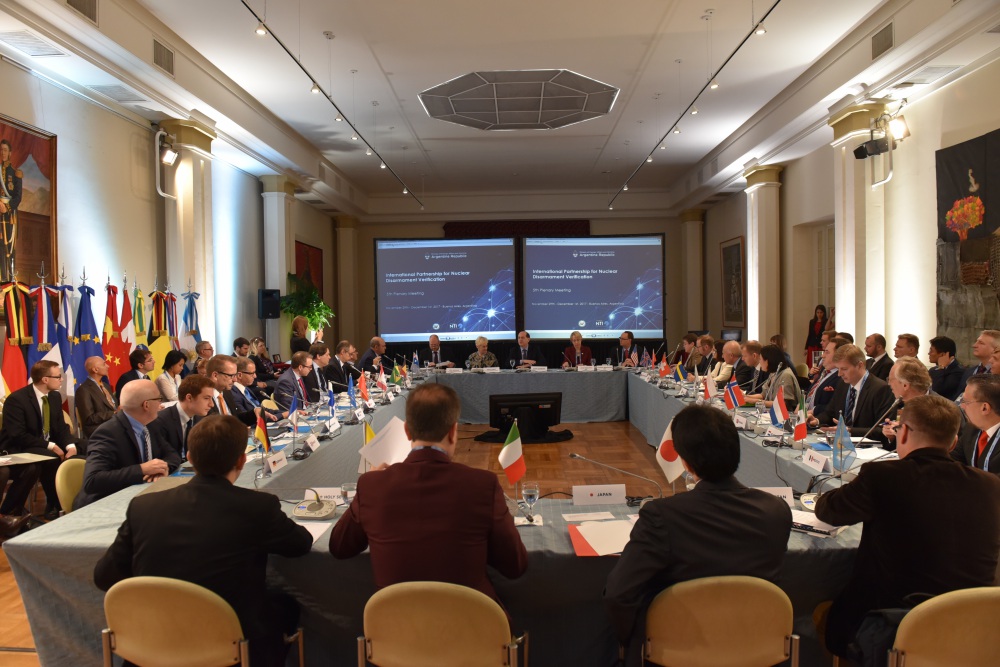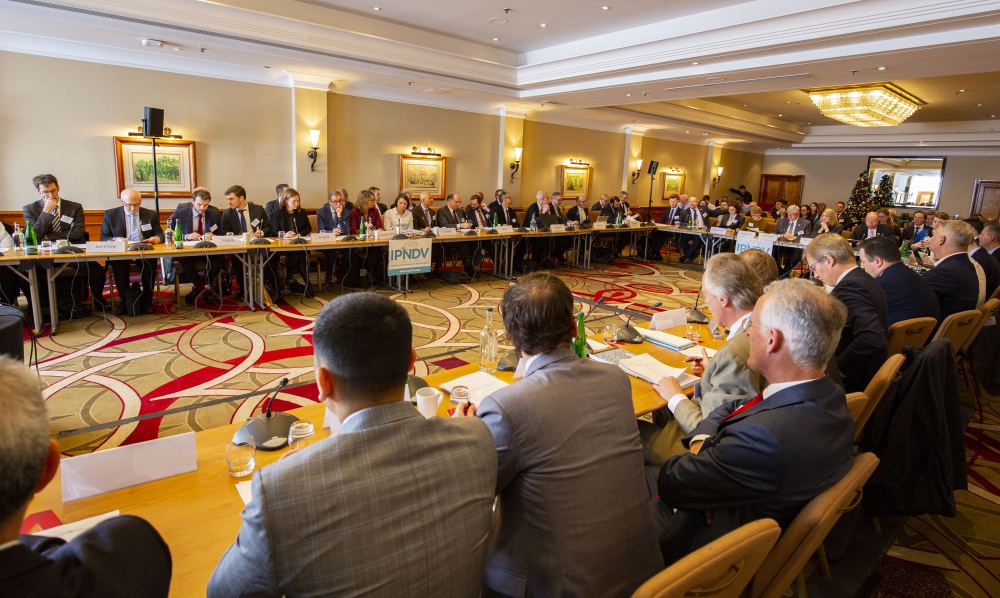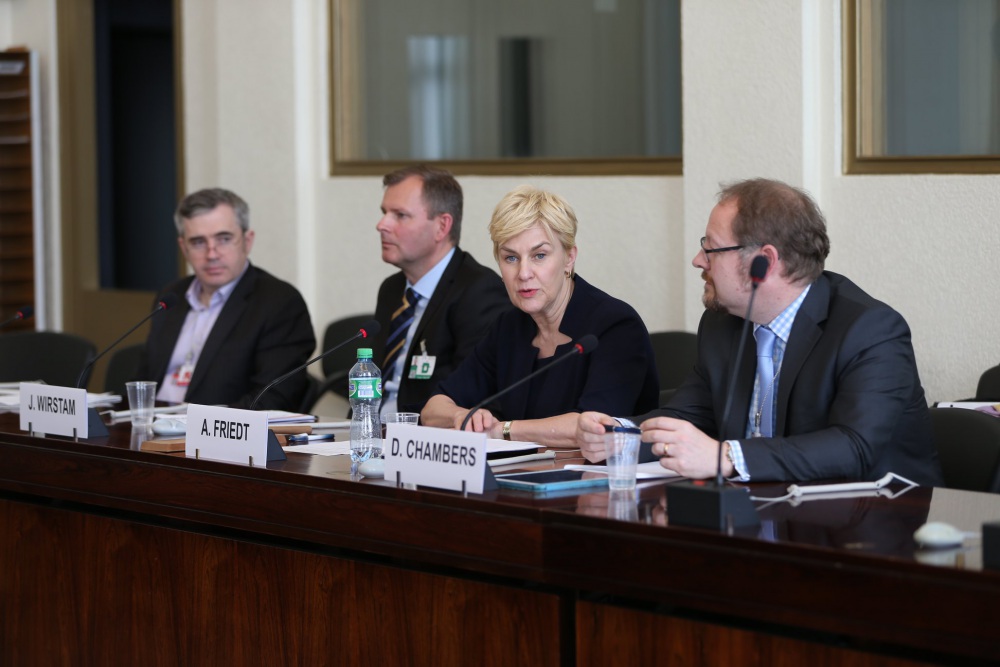
NTI Joins 80+ IPNDV Participants in Utrecht for Dismantlement Exercise and More
NTI Experts Participate in a Joint Working Group meeting of the Internaitonal Partnershup for Nuclear Disarmament Verification (IPNDV)
At the end of an initial two-year phase to study prospects
for effective monitoring of nuclear weapons dismantlement, countries
participating in the International Partnership for Nuclear Disarmament
Verification (IPNDV) have concluded that although tough challenges remain, multilaterally
monitored nuclear warhead dismantlement should be possible while at the same
time successfully managing safety, security, nonproliferation, and
classification concerns.
During its fifth plenary meeting—hosted by the Argentine
Ministry of Foreign Affairs and Worship in Buenos Aires from Nov. 29 to Dec. 1—the Partnership also defined a Phase
II program of work to expand the scope of its activities. The work of Phase II will amplify the
importance of verification in the run-up to the 2020 Nuclear Non-Proliferation
Treaty Review Conference. The Nuclear Threat Initiative (NTI) helped create the
partnership and provides ongoing substantive and logistical support.
In opening remarks, Argentine Deputy Foreign Minister Daniel
Raimondi noted that “by addressing the technical aspects involved in nuclear
disarmament verification, this initiative constitutes an important step in the
fulfillment of the primary obligations of nuclear weapon states that exist under
Article 6 of the NPT… We also believe that we need to foster dialogue and
confidence-building measures between nuclear and non-nuclear weapon countries.
In this context, this initiative constitutes a clear example in different fora
of how we could work together in reaching common understandings.”
The IPNDV was established in 2014 to address technical
challenges in nuclear disarmament verification. From the beginning, participants
identified key questions about the dismantlement of nuclear weapons, one of the
major challenges at the core of global nuclear disarmament efforts. Among them:
How can all countries, those with and without nuclear weapons, have confidence
that nuclear weapons have been dismantled? How can countries with these weapons
share enough information about the process to provide confidence—but not spread
sensitive information that could contribute to proliferation? Are the tools to
do this even available?
The decision to address nuclear weapon dismantlement in
Phase I was based on the recognition that dismantlement is one of the most
important, complex, and technically challenging tasks of nuclear disarmament
verification. The outcome of Phase I—illustrated
in a comprehensive dismantlement interactive infographic on a new IPNDV website,
as well as in a series of reports and papers—is essentially a tool kit outlining
technologies and procedures that could provide confidence in a future monitored
dismantlement process.
“Engaging countries with nuclear weapons and those without has
made IPNDV a unique and innovative resource,” said Joan Rohlfing, NTI
President. “Verification is in every country’s national security interest. All
countries need to understand each other’s concerns and determine what level of
visibility into a verification process is needed for everyone to have
confidence in disarmament.”
Multiple Analyses
Released on New Website
IPNDV is also launching a new website at www.ipndv.org with wide-ranging analyses from
Phase I. Key papers at www.ipndv.org
include:
Also available on the website are in-depth papers or “deliverables” from the three Phase I working groups. The working groups addressed
monitoring and verification objectives (co-chaired by the Netherlands and the
United Kingdom); on-site inspections (co-chaired by Australia and Poland); and
technical challenges and solutions (co-chaired by Sweden and the United States).
Papers include a detailed assessment of potential monitoring and verification
requirements as well as an assessment of countries’ existing capacity in this
arena.
New Infographic: How to Verify Dismantlement of a Nuclear
Weapon
The new website also features an interactive infographic
that allows visitors to walk, step-by-step, through a notional nuclear weapon dismantlement
process. Visitors can review the objectives of the host country and inspectors,
understand goals and required tasks, and then assess different options for
technologies and procedures to accomplish the task. This infographic integrates the work of all
three IPNDV working groups.
Looking to Phase II
At the Buenos Aires plenary meeting, IPNDV participants
developed an initial program of work for Phase II, which will continue to
concentrate on multilateral verification measures. The two-year phase will
deepen understanding of and develop effective and practical verification approaches
to support future nuclear disarmament. Specifically, working groups will
address verification related to declarations and inventories; nuclear arms
reductions; and technologies for verification. The first meeting of Phase II
will take place in Sweden in March of 2018.
About IPNDV
The IPNDV, through a unique public-private partnership
between the U.S. Department of State and NTI, brings together more than 25
countries, including countries with and without nuclear weapons.
Representatives from the following have attended various
activities of the Partnership during Phase I: Argentina, Australia, Belgium,
Brazil, Canada, Chile, the European Union, Finland, France, Germany, Holy See,
Indonesia, Italy, Japan, Jordan, Kazakhstan, Mexico, the Netherlands, Norway,
the Philippines, Poland, South Korea, Sweden, Switzerland, Turkey, the United
Arab Emirates, the United Kingdom, and the United States. China and the Russian
Federation participated in Phase I as observers.
IPNDV thanks the Government of Canada for funding the
development of the website, interactive infographic and other outreach tools.
Sign up for our newsletter to get the latest on nuclear and biological threats.
NTI Experts Participate in a Joint Working Group meeting of the Internaitonal Partnershup for Nuclear Disarmament Verification (IPNDV)
Members of NTI’s team joined more than 100 experts from 24 countries and the EU in London in early December 2018 for the sixth plenary meeting of IPNDV.
NTI Senior Director Andrew Newman participated in a panel event about the IPNDV at the 2018 NPT PrepCom.


